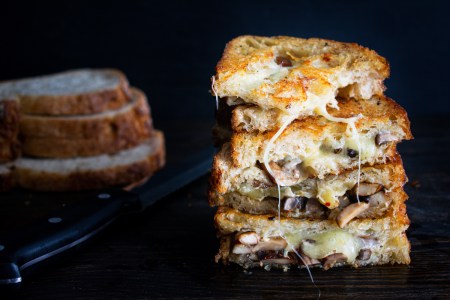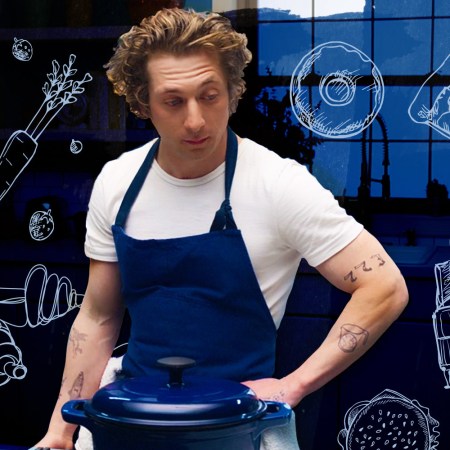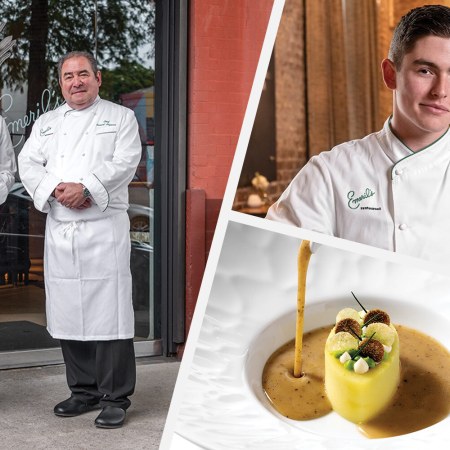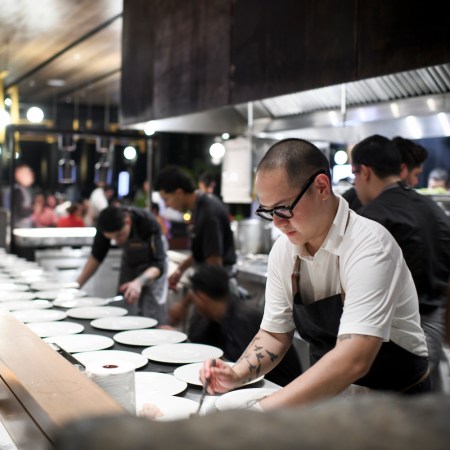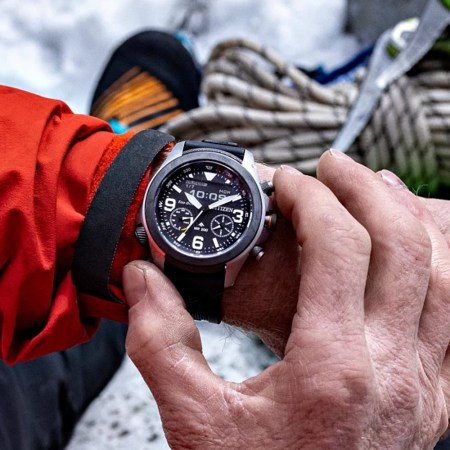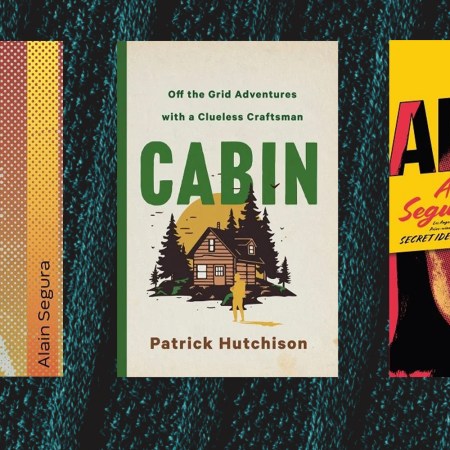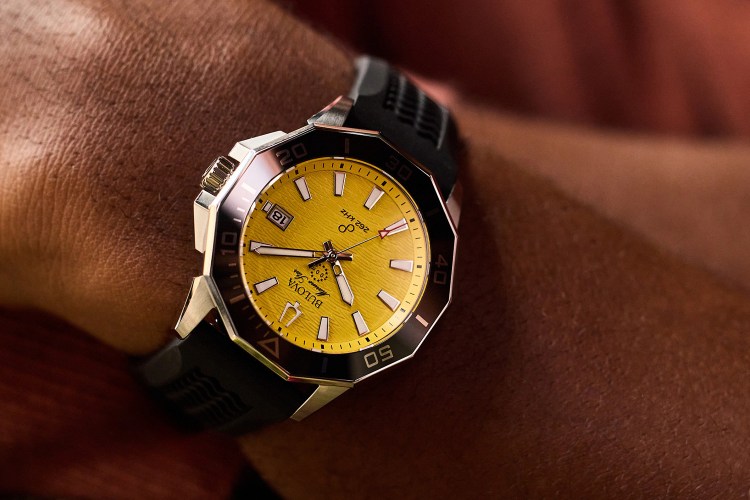“Often enough, I’m talking to start-ups in the food industry, and they tell me they have a unique recipe from their grandma and that they’re going to make millions,” says Valentin Chelnokov, the CEO of New Jersey’s Zina’s Fine Foods. “So I’ll ask about the recipe, and they’ll say they can’t share it with me. What if I steal it? That’s the way the food industry is thinking now. Yet the reality is that from packaged foods to restaurant dishes, there’s very limited protection for food.”
That, of course, doesn’t stop the question arising. Why isn’t pulling together various ingredients (the medium) to make a specific meal, perhaps arranged in specific way on a plate (your finished “creative work”), worthy of protection in law? “We’ve developed many recipes and seen attempts to copy them, some of them very bluntly,” Chelnokov says. “We haven’t lost business, but we’d like to call them out.”
Some chefs are more outspoken on the matter. A few years ago, several chefs — Heston Blumenthal, Daniel Boulud and David Chang among them — started to strongly discourage diners from taking photos of their dishes. Alexandre Gauthier of La Grenouillere restaurant in La Madelaine-sous-Montreuil even put an icon of a camera with a line through it on his menu. This was in part because it was a distraction to other diners but also in a bid to protect his work from copyists. As Gilles Goujon, chef at the three Michelin-starred L’Auberge du Vieux Puits in Fontjoncouse, put it at the time, photos “take away the surprise” of some of his dishes and “take a bit of my intellectual property.”
In what is an increasingly competitive market (restaurants now open and fail at a staggering rate), and one in which the chef’s celebrity, reputation and much-talked-about signature dishes are as much draws to a restaurant as the quality of the cooking, maybe they are right to seek the same protections as those working in other creative industries. “The idea of protecting dishes as creative works is an incredibly interesting one, even if it would be difficult to manage,” says Michelin-starred chef Steve Smith, who trained under Jean-Christophe Novelli. “But in terms of tackling plagiarism, it would be wonderful. We try really hard to make all we do have an identity — you want people to come to your place to eat what you’re doing — and to have that just lifted and served elsewhere makes all very difficult”.
Louise Sargeant, a lawyer with the intellectual property group of international law firm Bird & Bird, points out that while “as a patchwork, intellectual property rights tend to work pretty well to find the balance between protecting intellectual property and allowing for freedom of expression, it is an incredibly complex area of law.”
With subtle variations between nations, dependence on local politics, international treaties and other influences, patents — which protect inventions and new processes — and copyrights, which protect the expression of an idea but not the idea itself, tend to cover most bases. Patent could, in theory, be applied to recipes if the chef could meet the not inconsiderable challenge to show that the recipe or plating is novel and not obvious. Doing something clever with dry ice might work; adding strawberries to your cassoulet is unlikely to, if only because combing through the recipes of the world will probably turn up that it’s been done before.
Copyright, meanwhile, looks to literary, dramatic, musical, cinematographic and artistic works but not culinary ones. “A mere listing of ingredients is not protected under copyright law,” as the U.S. Copyright Office has it.
How to Make the Ultimate Grilled Cheese Sandwich
And no, American cheese does not make an appearanceUnless, that is, it’s in a cookbook. Typically, copyright protects the written word, and that includes recipes. In 2022, Nick Malgieri — pastry chef, founder of New York’s Institute of Culinary Education’s baking program and prolific cookbook author — found the recipe for his panettone reproduced on a blog “practically word for word,” though this publisher decided not to file a complaint. A few months before the Singaporean chef Sharon Wee accused fellow Singaporean chef Elizabeth Haigh of having “copied or paraphrased” recipes and other passages from Wee’s book, Haigh’s book was subsequently withdrawn.
Indeed, high-end cheffing is now such a brand-building exercise that perhaps it’s hard to make a case for secrecy with regards to some aspects of business while others are so public. The French chef Claude Bosi has noted that being copied may be frustrating when you’re starting out, but when you’re established, it’s flattery.
“An actual recipe could be protected as a trade secret,” Sargeant says. Brands like Coca-Cola, McDonalds and KFC have all done it. This is often the preference for the makers of mass-produced food stuff, precisely because the very process of applying for a patent means sharing your invention with the world. “But in an industry like the restaurant business, with such a high turnover of staff, keeping a trade secret is going to be very hard,” Sargeant adds. “Unless, that is, you use contracts that prevent chefs taking ideas to other restaurants. It quickly gets complicated. Certainly, it could be argued that a dish on a plate is a work of art, especially as the plating is now often very elaborate. But it just doesn’t seem to fit neatly within the categories [that are protected by law].”
That doesn’t stop people trying. In one of the highest profile cases to date, Rebecca Charles, the chef behind New York’s Pearl Oyster Bar, filed suit against Ed McFarland in 2007, the chef behind Ed’s Lobster Bar. She claimed his Caesar salad used the recipe handed down to her by her mother; she taught it to McFarland on the condition he would never use it elsewhere. McFarland claimed his Caesar was his own recipe.
Other efforts have proven to be, well, too much effort. Homaro Cantu applied for patents on a number of culinary inventions, including a method for printing pictures on edible paper. And for a time, David Burke, then chef at David Burke and Donatella, sought to defend the trademark he had on his “swordfish chop,” until chasing down infringements became a hassle.
Yet, others recognize the high legal hurdles but still take precautions anyway. The British chef Michael Caines keeps a meticulously detailed record of every recipe he creates on a secure database. It’s a way of reminding clients that, when he’s hired on a consultancy basis, his “body of work,” as he calls it, remains his body of work.
He finds a kindred spirit in Atul Kochlar, the first Indian chef to receive a Michelin star. “I do feel my recipes are my intellectual property,” he says. “It angers me when my dishes are copied outright — sometimes they don’t even bother to change the name. There’s this sense you’ve built a house, and now someone else is living in it. The creative work of chefs certainly seems to be an area that needs protection. It’s set to become a bigger issue in years to come. It could get pretty nasty.”
Indeed, just because culinary works don’t currently fall under the categories of creativity protected by the law, this does’t mean they can’t in the future. The law evolves, adapting to changes in social customs and expectations. Fashion, for example, was once a gray area, too. It used to be widely understood — not always accurately — that a mass-market brand could lift a high fashion design, tweak it marginally and claim it as a new design, even if the inspiration was obvious. That’s much harder to do now. So could food follow fashion in time?
“It’s possible, but the industries are very different,” Sargeant says. “There’s a strong culture of chefs traveling the world and collecting ideas to put into their own cooking. That’s not the same as copying a handbag.”
This is a hard fact that chefs have had to face before. Back in the 1980s, chef Jacques Maximim proposed the launch of a group that would protect chefs’ creations. It got mixed reactions. While some rallied around the cause, others considered it a non-starter. Chef Paul Bocuse said he was “perplexed” by it on the basis that all chefs “take inspiration from others,” adding that one of this own signature dishes was borrowed from another, lesser-known chef, “an old guy” in the south of France.
“That’s the problem,” agrees Ben Wilkinson, head chef at the Michelin-starred The Pass at South Lodge in the UK. “As a chef, you’re constantly taking inspiration from so many different sources. Sometimes you have an idea, and you’re not sure if it’s yours or you’ve just seen it somewhere else.”
Compare, perhaps, the creative process in the considerably more litigious music business. When Paul McCartney woke with the melody for “Yesterday” in his head, it was so fully-formed that he shelved it for some time, having assumed it was just a tune he’d heard elsewhere.
“I know chefs who can be very protective of their creations, and it does seem that certain styles belong to certain chefs, even if instances are few and far between,” Wilkinson says. “And certainly no chef wants to be accused of plagiarism, especially as people talk more and more about the restaurant business as being a ‘creative’ one. We chefs have conversations on WhatsApp pointing out when copying gets blatant, and there’s a lot of eye-rolling. But the fact is that when you get started, you tend to take ideas with you from job to job. There’s a risk that taking ownership of ideas would mean a loss to the progression of the rest of the industry.”
Valentin Chelnokov goes further. He argues that for all the people in the restaurant business who’d like to see their work protected, inherent to cooking are qualities that make protection more than just challenging, especially because food is made to be consumed. It doesn’t last. That’s why, while you can protect a sculpture made of marble, you won’t get far doing so with one made of snow. “Then you have to define what the creative work [in a dish] actually is,” Chelnokov says. “Give the same ingredients and the same recipe to two chefs, and likely you’ll end up with two different dishes anyway.”
Yet, this is not to say there isn’t room for the industry to change for the better, Chelnokov insists. Perhaps, he proposes, there is scope for some means by which chefs can ask permission of each other to use a recipe or a plating or maybe some kind of co-branding scheme and a royalty to go with it. “Even that would all be tricky,” he says. “You can imagine a chef trying your version of their recipe and not wanting to be associated with it. But I would love chefs to be given more credit where credit is due. If we pair, for example, caviar with fried chicken, we should be able to credit David Chang for the idea. That’s no more than a musician publicly recognizing his debt to, say, Jimi Hendrix. It’s the honorable thing to do.”
Join America's Fastest Growing Spirits Newsletter THE SPILL. Unlock all the reviews, recipes and revelry — and get 15% off award-winning La Tierra de Acre Mezcal.

